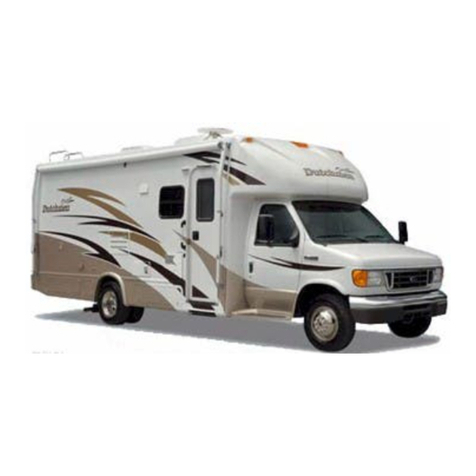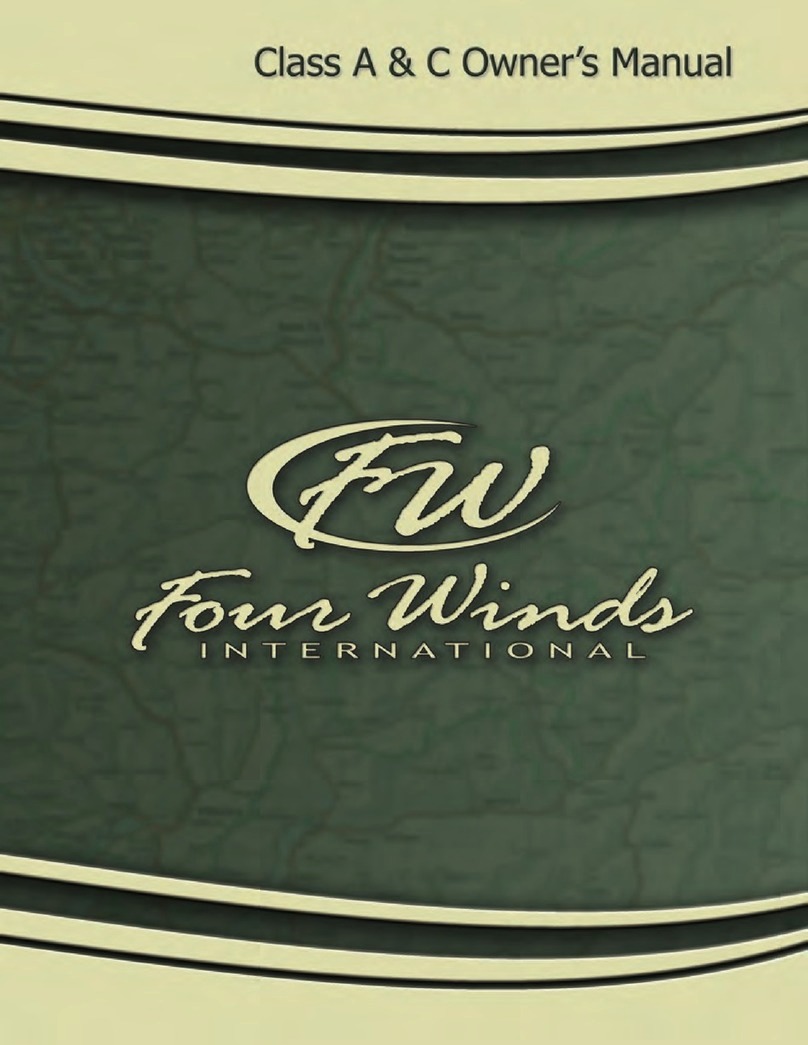Should a problem developfor which you need assistance, contact your
dealer. If the problem is automotive, the motorhome should
be
taken to
either a chassis manufacturer service center or dealer. If the problem is
with an appliance, check the appliance manufacturer's information sup-
plied with the recreational vehiclefor information regardingwarranty work
andlor location of appliancc scrvicc ccntcrs.
.
.
If, when traveling,you experiencea breakdown or whileyour
recreational vehicle is under warranty, and an authorized service cenkr
or dealer is not available, contact the dealer you purchased your recrea-
tional vehiclefrombefore having thework done at an independentservice
center. By notifying them, you will know what is covered under the terms
of your warranty,
as
well asmaking them awareof your problem.
Any
pnrta
thnt require replacement, thnt arecovered underthe terms of the
wtunu~ty
shouldberetained andreturned
to
your
local
dealeralong
with
your invoice.This way, they are ableto check what has occurred,
and also make sure you are properly reimbursed for your expenditures.
Repairs made without prior authorization may be subject to denial or
partial reimbursement..Modifications made
to
the recreational vehicle
without proper authorization can result in reduction or loss of warranty
coverage. Please make sure to contact your dealer before making such
changes.
REPORTING
SAFETY DEFECTS
The following note
ia
added
ss
a
requirement of the National
Highwxy
Mc
Safety
Administration
(NHTSA):
If you believe that your vehicle has a defect which could cause a crash
or could cause injury or death, you should immediately inform the Na-
tional Highway TrafficSafetyAdministration (NHTSA)in addition
to
noti-
fying the manufacturer.
If NHTSA receives similar complaints, it may open an investigation,
and if itfindsthat a safety defectexistsin a group of vehicles, itmay order
a recall and remedy campaign. However, NHTSA cannot become involv-
ed in individual problems between you, your dealer, or the manufacturer.
To contact NHTSA, you may either call the Auto Safety Hot-line toll-
frek at
1-800-424-9393
(or
366-0123
in Washington,
D.C.
20590).
You can
alsoobtain otherinformationaboutmotor vehicle safety fromtheHot-line.
FIRST
SHORT
TRIPS
After becoming familiarwith the vehicle's systems and going through
test runs on items such as use of Liquid Petroleum Gas (LPG), it is time
to take oneortwo shorttrips, including spendingthe night at a campground
not too distant from your homc
.
..
you might want to go back and get
something you forgot or didn't know you needed.
These short. trips can be considered "shake down cruises" or
"familiarization flights": The experiencegained on these.short trips will
be worth the time and money to you
.
.
.
time and money spent either
needlessly, taking something that takes up space or the time and money
spenttryingto obtainan itemyou hadn't counted onneedingprior
to
leav-
ing home base on an extended trip miles from home and in unfamiliar
surroundings.
It is understandably upsetting having to purchase a needed item on the
road knowing that one is sitting at home unused.
Not all RVers need the sameequipment or supplies. For one thing, the
United States presents a widevariety of climate;and terrain. For another,
personal needs and tastes come into play.
Our suggestionis to take a weekend trip to a :amp location that is close
to home. Be sureto have a note pad and pen availableto write down items
you feel will be needed in the future as well as equipment that you may
need to learn more about.
Also, if most of your trips will be made in the summer and your shake
down trip is made during some other season, there will be adjustments
to take into consideration. Talk to other RVers and learn from their
cxpcricnccs.
If you are an experienced RVer it is still necessary to thoroughly read
this manual. New and improved equipmentis coming onto themarket every
day and, at the same time, not every motor home manufacturer builds
vehicles the same way.
This manual ispacked with detail, however, afteryou have worked witk
thevarious systemsduring a coupleof shake down trips, you will
be
capable
of conductinga pre-trip checkin less time than it takes to read this manual.
Because of differentRV modelsFour
Win&
International manufac.
turers and the numbers of options available, your RV may not include all
of the systems described in this manual.
































